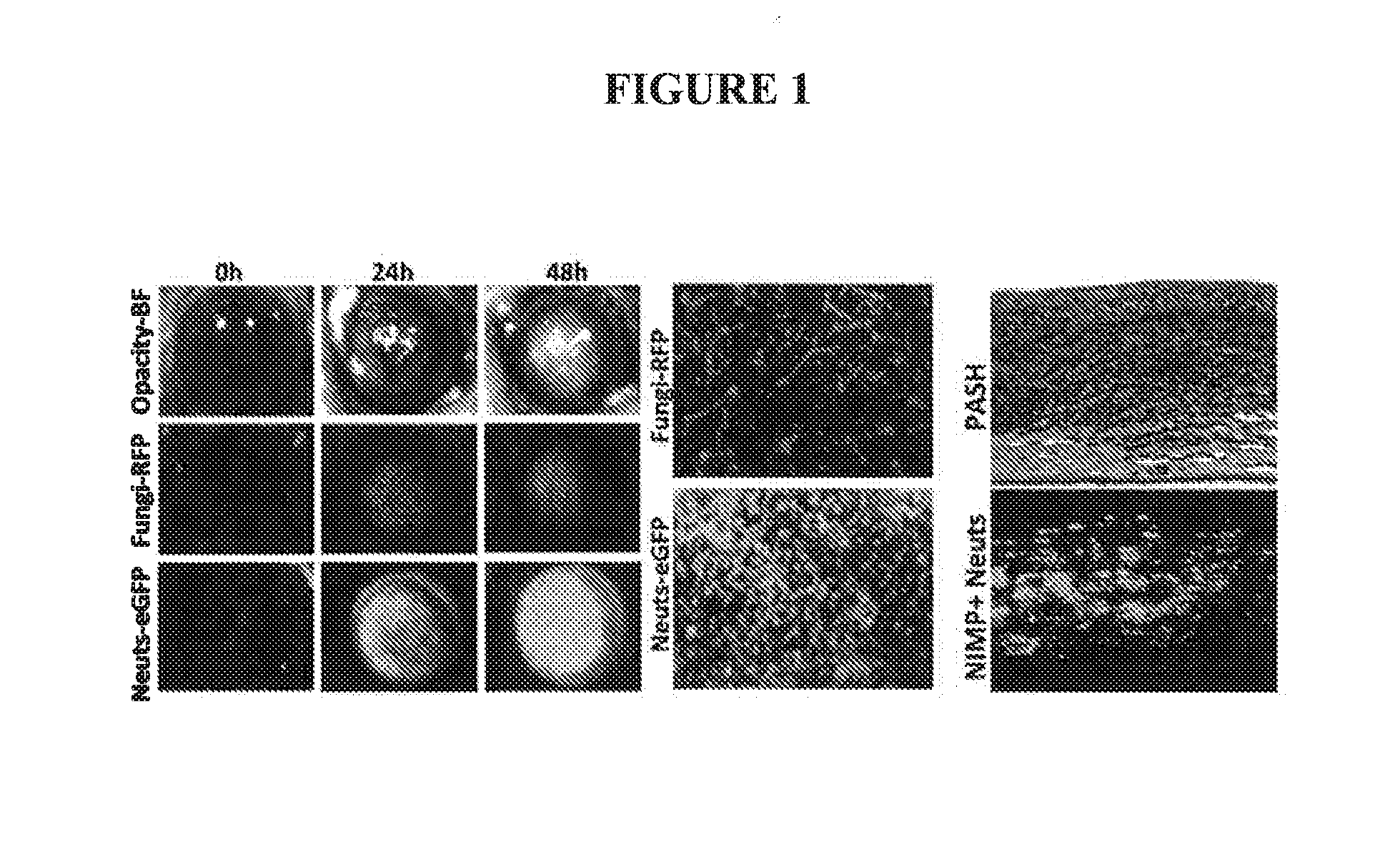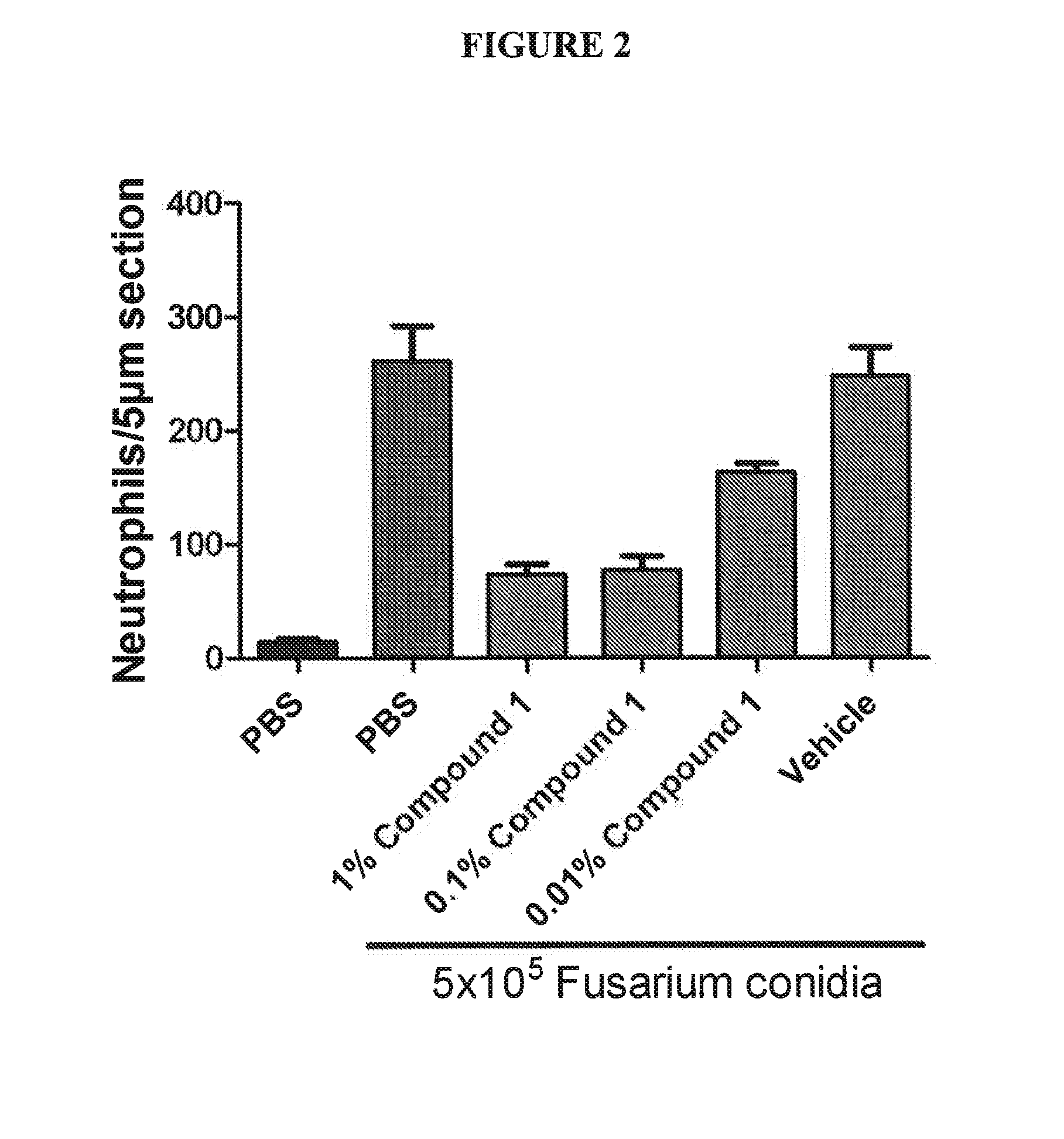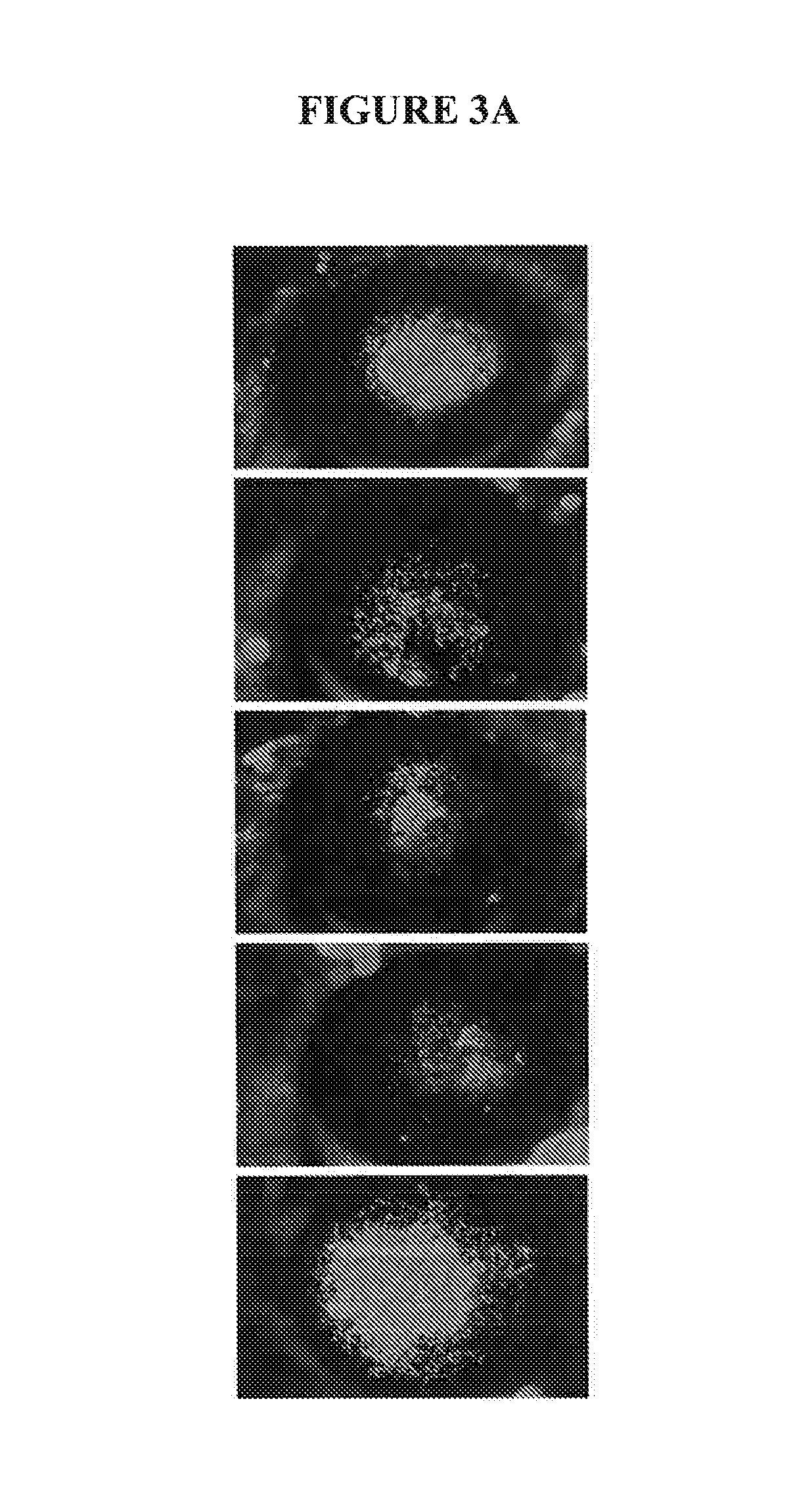Treatment for microbe-induced inflammatory responses in the eye
a technology of inflammatory response and eye, applied in the field of compounds, can solve the problems of adverse effects, corneal inflammation secondary to microbial infection, serious threat to visual acuity, etc., and achieve the effects of reducing neutrophil and macrophage infiltration, reducing corneal scarring, and facilitating further infiltration of fungal hypha
- Summary
- Abstract
- Description
- Claims
- Application Information
AI Technical Summary
Benefits of technology
Problems solved by technology
Method used
Image
Examples
example 1
[0035]
ConcentrationIngredient(w / v %)Syk Inhibitor 0.1%Dibasic Sodium Phosphate 0.2%Sodium Chloride0.75%Disodium EDTA0.01%Polysorbate 800.05%Benzalkonium Chloride Solution0.01%Hydroxypropyl Methylcellulose 0.5%
example 2
tion of Syk
[0036]Compounds can be tested for the ability to inhibit syk-catalyzed phosphorylation of a peptide substrate in a biochemical fluorescence polarization assay with isolated syk kinase. Test compounds are diluted to 1% DMSO in kinase buffer (20 mM HEPES, pH 7.4, 5 mM MgCl2, 2 mM MnCl.sub.2, 1 mM DTT, 0.1 mg / mL acetylated Bovine Gamma Globulin). Compounds in 1% DMSO (0.2% DMSO final) are mixed with ATP / substrate solution at room temperature. Syk kinase (Upstate, Lake Placid N.Y.) is added to a final reaction volume of 20 uL, and the reaction is incubated for 30 minutes at room temperature Final enzyme reaction conditions are 20 mM HEPES, pH 7.4, 5 mM MgCl.sub.2, 2 mM MnCl.sub.2, 1 mM DTT, 0.1 mg / mL acetylated Bovine Gamma Globulin, 0.125 ng Syk, 4 uM ATP, 2.5 uM peptide substrate (biotin-EQEDEPEGDYEEVLE-CONH2, SynPep Corporation). EDTA (10 mM final) / anti-phosphotyrosine antibody (1× final) / fluorescent phosphopeptide tracer (0.5× final) is added in FP Dilution Buffer to stop...
example 3
ungal Keratitis Model
[0037]A murine model of fungal keratits was used to test the syk inhibitor compositions of the present invention. The model is similar to the model described by Tarabishy et al. (J Immunol; Vol. 181:593-600; 2008, incorporated herein by reference in its entirety). Briefly, C57BL / 6 mice are inoculated with Fusarium conidia via intrastromal injection following corneal abrasion. Mice are examined under a stereomicroscope for ocular opacity. FIG. 1, left top panel shows mouse eyes under normal light showing progression of opacity as fungal infection spreads over 48 h. Fusarium was modified to express red fluorescent protein (RFP) using standard techniques. (FEMS Microbiol Letters; Vol. 225(2):305-9; 2003 Aug. 29, incorporated by reference in its entirety). FIG. 1, left middle panel shows that the RFP expression corresponds with the opacity in the top panel. Neutrophil expression was examined using anti-mouse neutrophil (NIMP) antibody conjugated with green fluoresce...
PUM
| Property | Measurement | Unit |
|---|---|---|
| osmolality | aaaaa | aaaaa |
| osmolality | aaaaa | aaaaa |
| pH | aaaaa | aaaaa |
Abstract
Description
Claims
Application Information
 Login to View More
Login to View More - R&D
- Intellectual Property
- Life Sciences
- Materials
- Tech Scout
- Unparalleled Data Quality
- Higher Quality Content
- 60% Fewer Hallucinations
Browse by: Latest US Patents, China's latest patents, Technical Efficacy Thesaurus, Application Domain, Technology Topic, Popular Technical Reports.
© 2025 PatSnap. All rights reserved.Legal|Privacy policy|Modern Slavery Act Transparency Statement|Sitemap|About US| Contact US: help@patsnap.com



